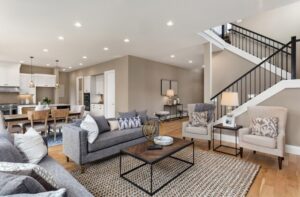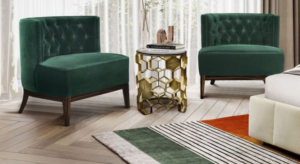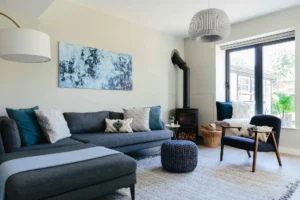Are you ready to breathe new life into your living space? It all starts with mastering the art of furniture arrangement. Whether you’re a tech-savvy consumer, a sustainable shopper, or a home decor enthusiast, understanding how to place your furniture can significantly impact the flow, functionality, and feel of your home. In this guide, we’ll explore practical tips and creative ideas to help you achieve a perfect flow, ensuring your space is both efficient and aesthetically pleasing. From utilizing digital tools to incorporating eco-friendly design strategies, you’ll find everything you need to create a harmonious living environment.

Understanding Your Space
Before you start moving furniture around, it’s crucial to analyze your space. Begin by measuring the dimensions of your room. Knowing the length, width, and height will help you understand what pieces can fit comfortably without overcrowding the area. Pay attention to the natural lighting; it can influence the mood and perception of space. For instance, placing a reading nook near a window can make the most of natural light and create a cozy corner.
Next, consider the traffic flow. Ensure there are clear pathways for movement to avoid creating obstacles. Furniture should not block doorways or windows, as these are essential for ventilation and access. Sketch a rough floor plan to visualize different layout options. This will serve as a reference point as you experiment with various arrangements.
Lastly, think about the focal points in your room. Identify elements like fireplaces, large windows, or built-in shelves that naturally draw attention. Arrange your furniture to highlight these features, creating a balanced and inviting space.
Tech-Savvy Solutions
In today’s digital age, numerous tools and apps can help you visualize your furniture arrangement before lifting a single piece. Apps like Roomstyler, Planner 5D, and HomeByMe allow you to create 3D models of your room, making it easier to experiment with different layouts. These platforms offer a variety of furniture options, enabling you to see how various pieces will look and fit in your space.
Augmented reality (AR) is another fantastic tool for tech-savvy consumers. Apps like IKEA Place use AR to project virtual furniture into your actual room through your smartphone camera. This gives you a real-time view of how different items will look and feel, helping you make more informed decisions.
Don’t overlook the power of social media. Platforms like Pinterest and Instagram are treasure troves of inspiration. Follow home decor influencers and brands to stay updated on the latest trends and get ideas for your space. Save your favorite pins and posts to create a vision board for your furniture arrangement project.
Sustainable Design
Eco-friendly design is more than just a trend; it’s a responsible choice that benefits both your home and the planet. Start by selecting furniture made from sustainable materials such as bamboo, reclaimed wood, or recycled metal. These materials are not only durable but also environmentally friendly.
Consider the longevity of the pieces you choose. Opt for timeless designs that won’t go out of style quickly. This reduces the need for frequent replacements, minimizing waste. Modular furniture is another excellent option, as it can adapt to different spaces and needs over time.
Incorporate plants into your arrangement to improve air quality and add a touch of nature to your home. Plants like spider plants, snake plants, and peace lilies are low-maintenance and effective at purifying the air. Use eco-friendly paint and finishes to complete your sustainable design. Look for products with low VOC (volatile organic compounds) to ensure a healthier indoor environment.
Creative Flow
Creating a perfect flow in your home is all about balance and harmony. Start by arranging the largest pieces of furniture first, such as sofas and beds. These pieces anchor the room and set the stage for smaller items. Place them in a way that promotes conversation and interaction, such as facing each other or creating a U-shape.
Next, add secondary pieces like side tables, armchairs, and ottomans. These items should complement the main furniture and enhance functionality. Think about how you use the space daily. If you enjoy reading, create a cozy corner with an armchair and a floor lamp. If you entertain often, ensure there’s ample seating and surface space for guests.
Don’t forget about the vertical space. Use shelves, wall art, and lighting to draw the eye upwards and create a sense of height. Mirrors are fantastic for making a room feel larger and brighter. Place them strategically to reflect natural light and open up the space.
Case Studies
Real-life examples can provide invaluable insights into effective furniture arrangement. Let’s explore a few case studies:
Living Room Transformation
Before: A cluttered living room with mismatched furniture and no clear focal point.
After: By repositioning the sofa to face the fireplace and adding a coffee table and matching side chairs, the room became more cohesive and inviting. The addition of a large rug anchored the space, while wall-mounted shelves provided storage without taking up floor space.
Small Apartment Makeover
Before: A small apartment with limited seating and storage options.
After: Swapping bulky furniture for sleek, multi-functional pieces made a significant difference. A sofa bed provided seating and a guest bed, while a fold-out dining table saved space when not in use. Floating shelves and under-bed storage maximized every inch of the apartment.
Eco-Friendly Office Setup
Before: A home office with outdated furniture and poor lighting.
After: Upgrading to a bamboo desk and ergonomic chair improved both aesthetics and comfort. Adding a vertical garden wall and using sustainable office supplies created a refreshing, eco-friendly workspace. Natural light was maximized by positioning the desk near a window, and energy-efficient LED lighting was installed to reduce electricity usage.
Future Trends
The world of home decor is always evolving, and staying ahead of the trends can help you create a timeless yet modern space. Here are a few future trends in furniture arrangement:
Smart Furniture
With the rise of smart homes, furniture is becoming more integrated with technology. Expect to see pieces with built-in charging stations, adjustable settings, and even voice-activated features. Smart furniture not only enhances convenience but also maximizes space and functionality.
Multi-Functional Pieces
As living spaces become smaller, multi-functional furniture is gaining popularity. Look for items that serve multiple purposes, such as a coffee table that doubles as storage or a sofa that converts into a bed. These pieces are perfect for maximizing space without sacrificing style.
Biophilic Design
Connecting with nature is becoming increasingly important in home design. Biophilic design incorporates natural elements like wood, stone, and plants to create a calming and rejuvenating environment. This trend is expected to continue growing as more people seek to bring the outdoors in.
Conclusion
Mastering furniture arrangement is a blend of art and science. By understanding your space, utilizing tech-savvy solutions, and incorporating sustainable design principles, you can create a home that is both functional and beautiful. Remember, the key is to experiment and find what works best for you. Don’t be afraid to rearrange and try new things until you achieve the perfect flow.
For those looking to take their home decor to the next level, consider consulting with a professional designer or using advanced tools to visualize your space. Whether you’re a seasoned decorator or just starting, these tips will help you transform your home into a haven of comfort and style.


